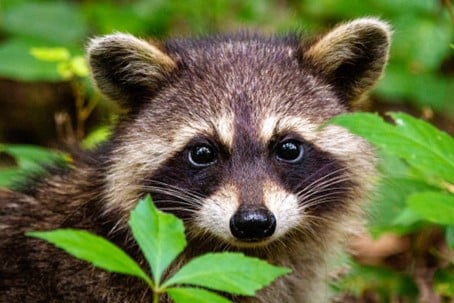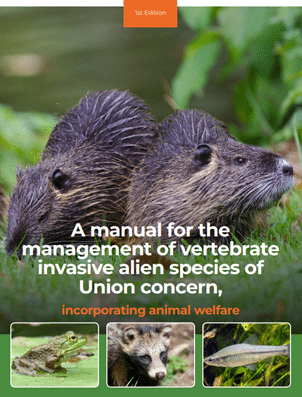If you’re lucky, on a walk in nature in some parts of Europe, you might spot a pair of inquisitive eyes staring down at you, and a striped fluffy tail visible in the trees. If you have spotted such a creature, there is a high chance it’s a raccoon.
Despite the fact that they’ve made themselves a home here, after being released or escaping from the pet trade, raccoons are considered an “invasive alien species”. This refers to species who are living in an area they are not normally found and who are thought to be a threat to other plants and animals.
Other animals considered invasive in Europe include the Siberian chipmunk, muntjac deer, ruddy duck and the grey squirrel. According to the Convention on Biological Diversity and European Union (EU) legislation, this means we have to prevent them arriving or try to eradicate them.

A young raccoon: Photo credit: Joshua J. Cotton
Why care about invasive animal welfare?
How can we manage species thought of as invasive in an ethical way? As people who care about wildlife, this is a topic that can put conservationists in a tricky dilemma. Progress is being made with the launch of the first EU manual for the management of vertebrate invasive alien species, incorporating animal welfare.
This manual was created by a consortium of animal welfare and nature conservation groups, led by the International Union for Conservation of Nature. It acknowledges that “there is an increasing public concern for invasive alien animals as sentient beings, and, more generally, an increasing interest from civil society in the humane treatment of animals.”

Front cover of the new European Union manual
A shift in consciousness about animals
Animal sentience – their ability to feel joy and pain – is increasingly recognised around the world. For example, the EU’s 2009 Lisbon Treaty and the 2017 Animal Welfare Strategy for Africa, state that we should treat animals as sentient beings by ensuring we provide for their welfare. The public, policymakers and conservationists are now more conscious that the fellow beings with whom we inhabit this earth also possess consciousness. This, of course, is also the case for so-called invasive animals.
The launch of this manual is one small step along the way to the more humane treatment of animals, even those that are considered to be in the wrong place at the wrong time. The manual provides guidance on measures to control species deemed invasive which “cause the least animal welfare harms to the least number of animals.” This means sparing these animals any avoidable pain, distress or suffering and protecting other non-target species and the environment.
Prevention is better than cure
The manual also discusses international consensus principles for ethical wildlife control, including non-lethal methods such as fertility control and keeping animals in captivity. Another important factor is prevention through changing our behaviour. For example, there are plans in the EU to regulate the exotic pet trade with a “positive list” of species allowed as pets. After all, prevention is better than cure – if animals seen as invasive don’t arrive in the first place then we won’t have to eradicate them.

A grey squirrel dining on a baguette: Photo credit: Dieter Telemans
This is a story of optimism because it shows how we are slowly expanding our moral circle to consider the lives of other beings, even those who are judged to be in the wrong place. It resonates with ideas about compassionate conservation, in which we try to do as little harm as possible in our efforts to save species around the world. Invasive animals are after all, both part of biodiversity and individuals in their own right.
According to the Intergovernmental Science-Policy Platform on Biodiversity and Ecosystem Services, there are many ways that we humans value nature. Considering factors such as the intrinsic and cultural value of animals deemed invasive, and protecting them as best we can, may be part of the transformational change necessary to halt and reverse the loss of nature around the world.

